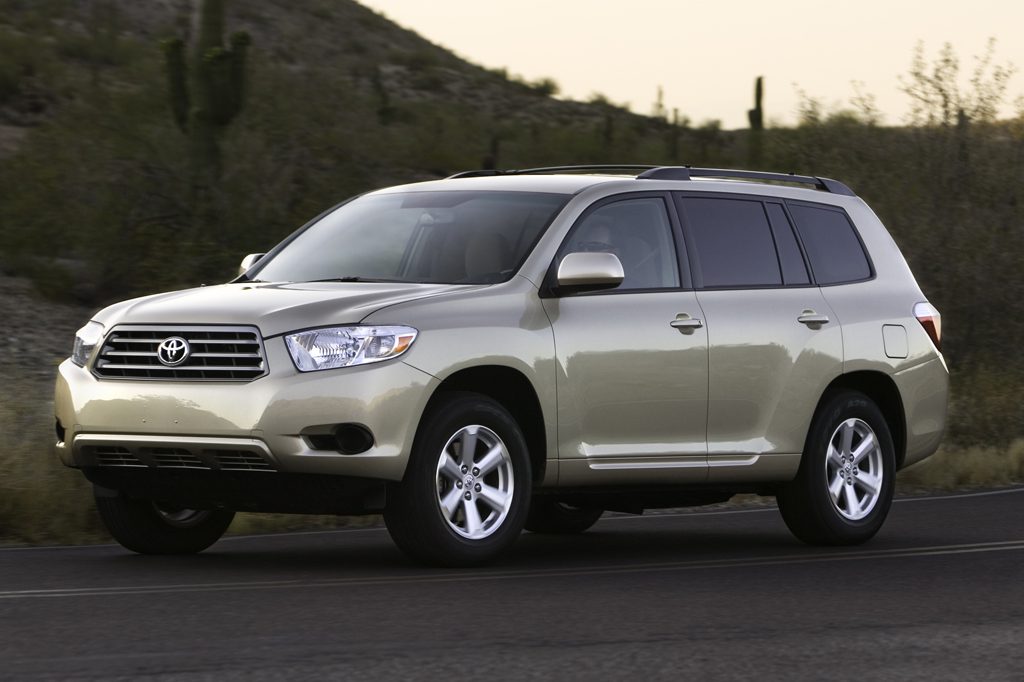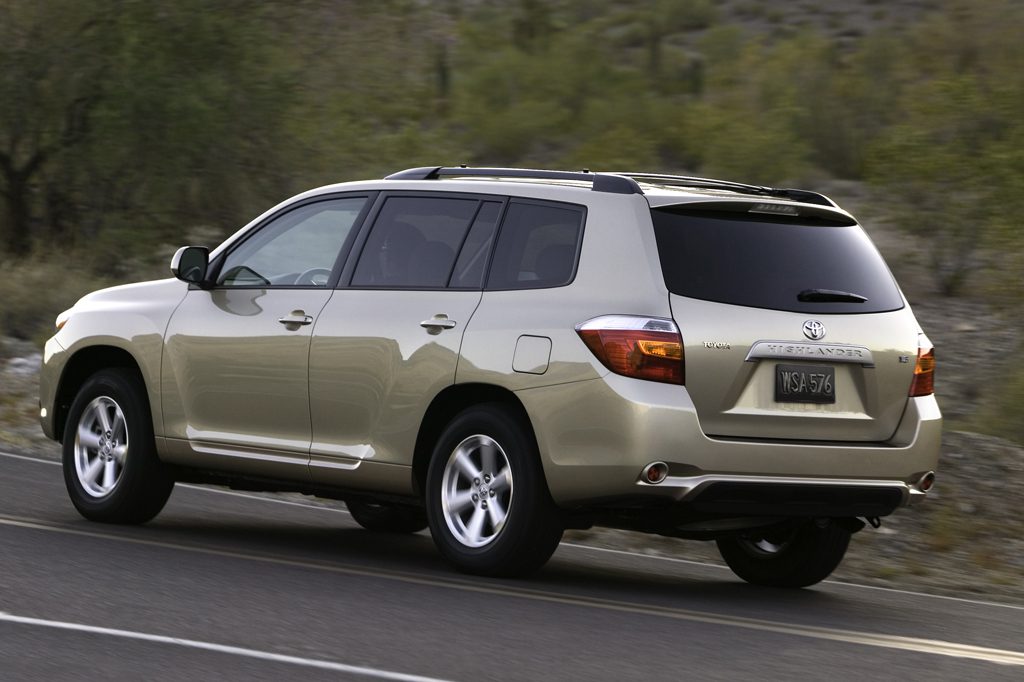| Midsize SUV; Built in Japan |
|
|
| Good condition price range: $9,700 – $36,500* |

2008 Toyota Highlander Front

2008 Toyota Highlander Rear

2008 Toyota Highlander Interior

2008 Toyota Highlander Profile
| Pros: |
|
| Cons: |
|
Highlander is a refined, family-focused SUV that offers great practicality, cargo and passenger versatility, and evident quality. Versions with the conventional V6 engine best represent Highlander’s attributes. Hybrid models’ higher prices may take years to offset in fuel savings.
Overview
Redesigning of Toyota’s midsize crossover sport-utility vehicle for 2008 brought larger dimensions, more standard safety features, and a new engine. For 2008, Highlander grew nearly four inches in length and three inches in width, resulting in more passenger and cargo room. Highlanders seated up to seven with a stowable third-row seat. The second-row buckets offered three-passenger capacity via a detachable padded center section that folded and stowed in a first-row console when not in use. Rivals included the GMC Acadia, Honda Pilot, and Mazda CX-9.
Highlanders could have front-wheel drive or all-wheel drive. Non-Hybrid Highlanders came in Base, Sport, and Limited models and used a 270-horsepower 3.5-liter V6 engine. The AWD-only Hybrid came in Base and Limited trims and used a 3.3-liter V6 teamed with an electric motor for a combined 270 horsepower. Like Toyota’s other hybrids, it could run on either or both of its power sources depending on driving demands, and required no plug-in charging. Hybrids had a continuously variable automatic transmission (CVT). Other Highlanders used a conventional five-speed automatic transmission with manual shifting capability. New for 2008 was the Hybrid’s EV mode that allowed the driver to put Highlander into full-electric drive mode for a limited distance. Also new was a driver-selectable Econ mode that regulated throttle inputs for optimum fuel economy.
Safety features included curtain side airbags with rollover deployment that covered the first two seating rows, front side airbags, a driver’s knee airbag, antilock brakes, traction control, and an antiskid system. Standard on all non-Hybrid AWD models was hill descent control, which helped regulate speed on downhill slopes. Options included a sunroof, DVD entertainment, three-zone climate control, and a navigation system.
Yearly Updates
| 2009 Highlander New four-cylinder base models joined the Highlander lineup with a 187-horsepower, 2.7-liter engine and six-speed automatic transmission. The 270-hp 3.5-liter V6 was optional for base models and standard on Sport and Limited editions. Peak towing capacity was 3,500 pounds for the Hybrid and 5,000 for conventional gasoline-engine Highlanders. |
| 2010 Highlander The 2010 Toyota Highlander was largely unchanged. A rearview camera was newly available on the Base V6. |
| 2011 Highlander The 2011 Toyota Highlander got freshened styling and a revised gas/electric Hybrid model, which now came with a 3.5-liter V6 as opposed to a 3.3-liter on the 2010 model. |
| 2012 Highlander The 2012 Toyota Highlander saw only minor changes. |
| 2013 Highlander The main changes for the 2013 Toyota Highlander involved new infotainment systems and the promotion of an option package to trim-level status. The Highlander Plus, was the new model that slotted above the SE and effectively replaced the previous Tech Package option. The Highlander Hybrid saw only one notable change: a standard navigation system with Toyota’s Entune mobile-multimedia service. It replaced an older-style navigation system that had been optional. |
